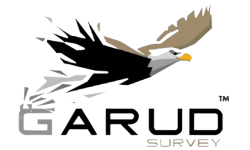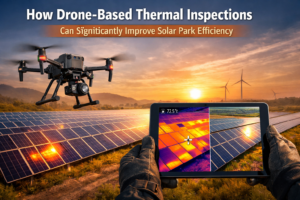As the world rapidly shifts towards renewable energy sources, solar power has emerged as a leading player in the clean energy revolution. Solar panels are now ubiquitous, found on rooftops, commercial buildings, and vast solar farms. However, to ensure these solar panels operate at peak efficiency, regular inspection and maintenance are essential. This is where drone technology steps in, revolutionizing the way we monitor and maintain solar installations.
The Importance of Solar Panel Inspections
Solar panels are exposed to the elements 24/7, making them susceptible to various issues that can affect their performance. Dust, debris, bird droppings, and even minor physical damage can reduce a solar panel’s efficiency. Traditional methods of inspecting solar panels involve manual inspections, which are time-consuming, labor-intensive, and sometimes risky, especially for large installations.
Regular inspections help in identifying problems early, preventing minor issues from escalating into major repairs or replacements. This proactive approach not only ensures optimal performance but also extends the lifespan of the solar panels, providing a better return on investment.
Enter Drone Technology
Drones, also known as unmanned aerial vehicles (UAVs), have transformed various industries, and solar panel inspection is no exception. Equipped with advanced sensors and cameras, drones offer a quick, efficient, and cost-effective solution for inspecting solar installations. Here are some key benefits of using drones for solar panel inspections:
1. Efficiency and Speed
Drones can cover large areas in a fraction of the time it takes for manual inspections. This is particularly beneficial for large solar farms where inspecting each panel individually would be impractical. With drones, operators can inspect thousands of panels in a single flight, significantly reducing the time and labor costs associated with inspections.
2. High-Resolution Imaging
Modern drones are equipped with high-resolution cameras and thermal imaging sensors. These tools allow for detailed visual and thermal inspections of solar panels. High-resolution images help in identifying physical damage, such as cracks or dirt accumulation, while thermal imaging can detect issues like hot spots, which indicate malfunctioning cells.
3. Safety
Inspecting solar panels, especially those mounted on rooftops or large solar farms, can be hazardous. Drones eliminate the need for inspectors to physically access potentially dangerous areas. This not only enhances safety but also reduces the liability risks for inspection companies.
4. Cost-Effectiveness
While the initial investment in drone technology may seem high, the long-term savings are substantial. Drones reduce the need for manual labor and equipment like scaffolding or ladders. Additionally, early detection of issues helps in avoiding costly repairs and replacements, ensuring that the solar panels remain operational for a longer period.
5. Comprehensive Data Collection
Drones can collect a wide range of data during inspections, including visual imagery, thermal data, and even 3D models of the solar installation. This comprehensive data collection allows for detailed analysis and reporting, enabling stakeholders to make informed decisions about maintenance and repairs.
How Drone Inspections Work
The process of a drone inspection typically involves several steps, from planning the flight to analyzing the collected data. Here’s a step-by-step overview of how drone inspections for solar panels work:
1. Pre-Flight Planning
Before the drone takes off, a detailed flight plan is created. This plan includes mapping the solar installation, setting waypoints, and defining flight parameters such as altitude and speed. Pre-flight planning ensures that the drone covers the entire area efficiently and captures all necessary data.
2. Data Collection
Once the flight plan is set, the drone takes off and follows the predefined path. During the flight, the drone captures high-resolution images and thermal data of the solar panels. The data is typically stored on board the drone and later transferred to a computer for analysis.
3. Data Analysis
After the flight, the collected data is analyzed using specialized software. High-resolution images are inspected for physical damage, while thermal images are analyzed for hot spots and other thermal anomalies. Advanced software can also create detailed reports and 3D models, providing a comprehensive overview of the solar installation’s condition.
4. Reporting
The final step involves generating a detailed report based on the analyzed data. This report highlights any issues detected during the inspection and provides recommendations for maintenance and repairs. The report can be shared with stakeholders, including solar panel owners, maintenance teams, and insurance companies.
Applications of Drone Inspections
Drone inspections are versatile and can be used in various scenarios related to solar panel maintenance. Here are some common applications:
1. Routine Inspections
Regular inspections are crucial for maintaining the efficiency and longevity of solar panels. Drones can be scheduled for routine inspections to ensure that any issues are detected early and addressed promptly.
2. Post-Installation Inspections
After installing a new solar panel system, a drone inspection can verify that the panels are correctly installed and functioning as expected. This helps in ensuring that the installation meets the required standards and specifications.
3. Damage Assessment
In the event of a natural disaster or other incidents that could damage solar panels, drones can quickly assess the extent of the damage. This rapid assessment helps in planning repairs and minimizing downtime.
4. Performance Optimization
Drones can be used to monitor the performance of solar panels over time. By identifying areas with reduced efficiency, maintenance teams can take corrective actions to optimize the overall performance of the solar installation.
The Future of Solar Panel Inspections
As drone technology continues to evolve, the capabilities and applications of drone inspections are expected to expand. Here are some trends to watch for in the future:
1. Artificial Intelligence and Machine Learning
Integrating AI and machine learning with drone inspections can enhance data analysis and reporting. AI algorithms can automatically detect anomalies in the collected data, reducing the time and effort required for manual analysis. Machine learning can also improve the accuracy of inspections by learning from past data and identifying patterns.
2. Automated Drones
Fully automated drones capable of conducting inspections without human intervention are on the horizon. These drones can be programmed to perform regular inspections, upload data to the cloud, and even charge themselves between flights. Automation will further increase the efficiency and cost-effectiveness of drone inspections.
3. Advanced Sensors
The development of more advanced sensors will enhance the capabilities of drone inspections. For example, hyperspectral imaging can provide more detailed information about the condition of solar panels, while lidar sensors can create precise 3D models of the solar installation.
Conclusion
Drone technology is revolutionizing the way we inspect and maintain solar panels. With their efficiency, safety, and cost-effectiveness, drones offer a superior alternative to traditional inspection methods. As the technology continues to advance, drone inspections will play an increasingly vital role in ensuring the optimal performance and longevity of solar panel installations.
For companies and individuals invested in solar energy, adopting drone inspection technology is not just a smart move—it’s an essential step towards a sustainable and efficient future. By leveraging the power of drones, we can ensure that solar panels continue to harness the sun’s energy effectively, driving us closer to a clean and renewable energy future.



